This is an eye-catching Art Deco style cast bronze sculpture from the last quarter of the 20th century. The naked lady holds a platter with a dramatic shawl flowing almost to the ground. There is no mistaking the quality and unique design of this Art Deco style statuette, which is sure to be treasured by any discerning admirer of fine art. This high quality hot cast solid bronze was produced using the traditional "lost wax" process, otherwise known as the "cire perdue" method. Condition: In excellent condition, please see photos for confirmation. Dimensions in cm: Height 78 x width 47 x depth 28 and Weight 17 kg Dimensions in inches: Height 30.7 x width 18.5 x depth 11.0 & Weight 37.5 lbs Lost wax method Sometimes called by the French name of cire perdue or the Latin, cera perduta is the process by which a bronze or brass is cast from an artists sculpture. In industrial uses, the modern process is called investment casting. An ancient practice, the process today varies from foundry to foundry, but the steps which are usually used in casting small bronze sculptures in a modern bronze foundry are generally quite standardised. Art Deco or Deco, is an influential visual arts design style which first appeared in France during the 1920s, flourished internationally during the 1930s and 1940s. It is an eclectic style that combines traditional craft motifs with Machine Age Imagery and materials. The style is often characterized by rich colours, bold geometric shapes, and lavish ornamentation. Deco emerged from the Interwar period when rapid industrialization was transforming culture. One of its major attributes is an embrace of technology. This distinguishes Deco from the organic motifs favored by its predecessor Art Nouveau. Historian Bevis Hillier defined Art Deco as "an assertively modern style...[that] ran to symmetry rather than asymmetry, and to the rectilinear rather than the curvilinear; it responded to the demands of the machine and of new material...[and] the requirements of mass production". During its heyday Art Deco represented luxury, glamour, exuberance, and faith in social and technological progress.
Questa è un'accattivante scultura in bronzo fuso in stile Art Deco dell'ultimo quarto del 20° secolo. La donna nuda tiene un piatto con un drammatico scialle che scorre quasi fino a terra. Non c'è dubbio sulla qualità e sul design unico di questa statuetta in stile Art Deco, che sarà sicuramente apprezzata da ogni ammiratore esigente di belle arti. Questo bronzo solido fuso a caldo di alta qualità è stato prodotto utilizzando il tradizionale processo a "cera persa", altrimenti noto come metodo "cire perdue". Condizioni: In ottime condizioni, si prega di vedere le foto per conferma. Dimensioni in cm: Altezza 78 x larghezza 47 x profondità 28 e Peso 17 kg Dimensioni in pollici: Altezza 30,7 x larghezza 18,5 x profondità 11,0 & Peso 37,5 libbre Metodo a cera persa A volte chiamato con il nome francese di cire perdue o il latino, cera perduta è il processo con cui un bronzo o un ottone viene fuso da una scultura di artisti. Negli usi industriali, il processo moderno è chiamato investment casting. Una pratica antica, il processo oggi varia da fonderia a fonderia, ma i passi che sono di solito utilizzati nella fusione di piccole sculture in bronzo in una moderna fonderia di bronzo sono generalmente abbastanza standardizzati. Art Deco o Deco, è uno stile influente di design delle arti visive che apparve per la prima volta in Francia durante gli anni '20, fiorì a livello internazionale durante gli anni '30 e '40. È uno stile eclettico che combina motivi artigianali tradizionali con immagini e materiali dell'età della macchina. Lo stile è spesso caratterizzato da colori ricchi, forme geometriche audaci e ornamenti sontuosi. Deco emerse dal periodo tra le due guerre, quando la rapida industrializzazione stava trasformando la cultura. Uno dei suoi principali attributi è un abbraccio della tecnologia. Questo distingue la Deco dai motivi organici favoriti dal suo predecessore Art Nouveau. Lo storico Bevis Hillier ha definito l'Art Deco come "uno stile assertivamente moderno...[che] correva verso la simmetria piuttosto che l'asimmetria, e verso il rettilineo piuttosto che il curvilineo; rispondeva alle richieste della macchina e del nuovo materiale...[e] ai requisiti della produzione di massa". Durante il suo periodo d'oro l'Art Deco rappresentava il lusso, il glamour, l'esuberanza e la fede nel progresso sociale e tecnologico.
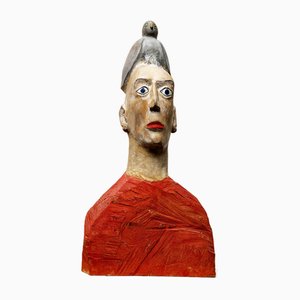


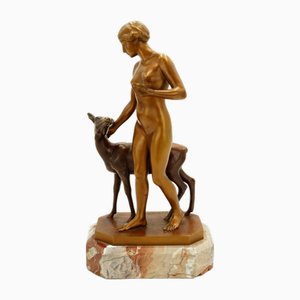


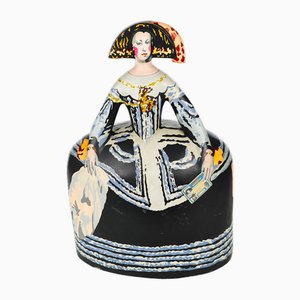
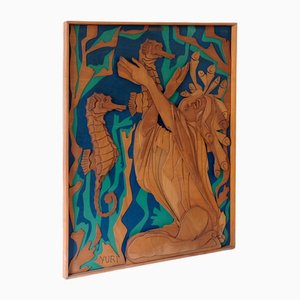

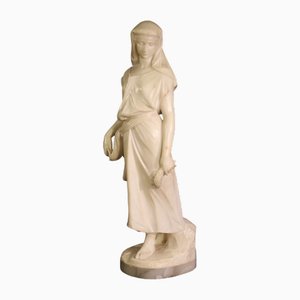
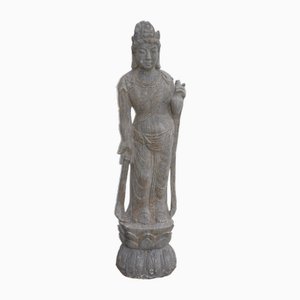
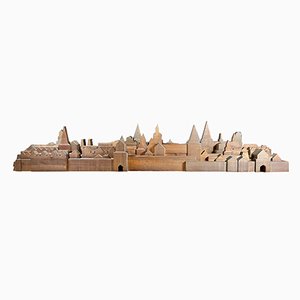

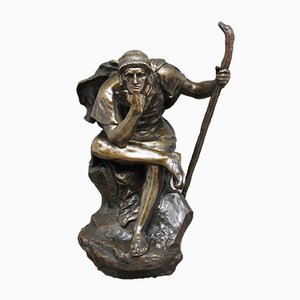


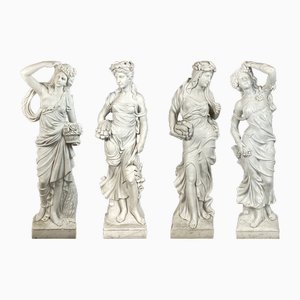



Contattaci
Fai un'offerta
Abbiamo notato che sei nuovo su Pamono!
Accetta i Termini e condizioni e l'Informativa sulla privacy
Contattaci
Fai un'offerta
Ci siamo quasi!
Per seguire la conversazione sulla piattaforma, si prega di completare la registrazione. Per procedere con la tua offerta sulla piattaforma, ti preghiamo di completare la registrazione.Successo
Grazie per la vostra richiesta, qualcuno del nostro team vi contatterà a breve.
Se sei un professionista del design, fai domanda qui per i vantaggi del Programma Commerciale di Pamono